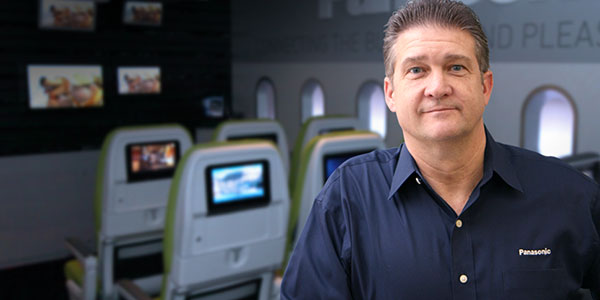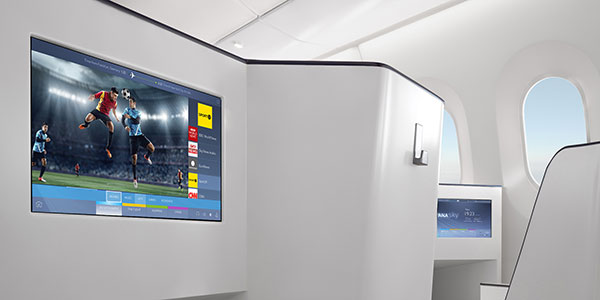
It may well be a challenge for airlines to return a near-term profit on their investments in in-flight connectivity (IFC) services, but there is little doubt about the long-term benefits of their significant financial outlays. In truth, for many carriers, not investing in onboard connectivity and aircraft e-enablement is quite simply not an option. This fact is aptly highlighted by EuroConsult’s ‘Prospects for In-flight Entertainment and Connectivity’ report, which states that over 12,900 commercial aircraft will be equipped with onboard connectivity by 2023, with revenue from passenger connectivity services reaching $2.1 billion by the same year, compared to $440 million in 2013.
“There are lots of new airlines coming online. We’re seeing probably two or three airlines per month have their very first aircraft equipped with Wi-Fi,” David Bruner, Panasonic Avionics Corporation’s Vice President of Global Communications Services, told FTE. “If you look at January 1 2015 versus January 1 2016, you’re going to see a radically different landscape in terms of the number of airlines that have at least started their implementation.”
The opportunities created by connectivity services are well documented. Providing passengers with access to Wi-Fi is an obvious one, and airlines are acutely aware of the wider benefits too, including enhanced operational efficiency and reduced maintenance costs.
However, keen to find out how IFC advancements are likely to directly impact the passenger over the next 12-36 months, FTE sought the views of Panasonic’s Bruner, who pointed to re-accommodation as a key trend. “In-flight re-accommodation is something that airlines have wanted to do for 20-plus years, but there wasn’t a reliable, economical way to connect to the aircraft to tell you. That is now starting to change, though,” he explained. “If you know you are going to miss a connection, the airline has probably already re-accommodated you on the ground, but they haven’t been able to tell you. They can’t remove this anxiety while you’re onboard.
“What airlines really want to be able to do is tell you directly, onboard the plane that they have taken care of you. So now you’re sitting with your mobile onboard the plane and they can send you the notice and tell you immediately. I think passengers do realise that problems can occur, but the key is knowing what to do. As soon as you know you are being taken care of, you can start to recover and your anxiety level goes down. This is something we’ll see a lot more of.”
Live sport to become ‘the biggest thing onboard airplanes’

The increasing uptake of IFC services has already had a notable impact on in-flight entertainment (IFE), with wireless IFE becoming a more common feature – as highlighted by a number of US carriers who have adopted such services in recent months. According to Bruner, however, live sport could prove to be the true game-changer in the medium-term. As providers create more capacity in their networks and airlines invest in the next-generation of connectivity services, the barriers to making live streaming at 30,000 feet a widespread feature of air travel – including on international flights – are being removed.
“Two or three years from now, you’re going to see live sport just being the biggest thing onboard airplanes,” Bruner said. “We always think of IFE being movie content and then some television shorts, but live sport is just so popular. Last year we carried the World Cup on our Sport 24 channel and during the time we broadcast the finals, no one watched anything else but the World Cup. Even if you weren’t a big sports fan, you were watching it. One of the things it tells us is people want live television and they want live sports onboard the aircraft.”
Such is the popularity of live television onboard the aircraft – the likes of JetBlue, WestJet, Frontier Airlines, Southwest, United, Lufthansa and Etihad Airways are among those that offer live television in partnership with various suppliers – Bruner suggested that Panasonic could soon add to its existing offer, with more choice of sport being the leading option. “We already have challenges between showing the Bundesliga or the EPL (English Premier League), for example, and we have La Liga and all these other leagues coming onboard, so we’re being asked to have more than one channel. That’s exactly what I see happening because it’s that popular.”
Of course, leveraging onboard connectivity to facilitate in-flight re-accommodation and live onboard television comes at a cost to airlines, but with uptake for paid-for passenger connectivity services still lagging in the single digits, Bruner said he expects to see “more carriers going to subsidised or complimentary services”, with the wider e-enablement benefits helping to justify the investment.





